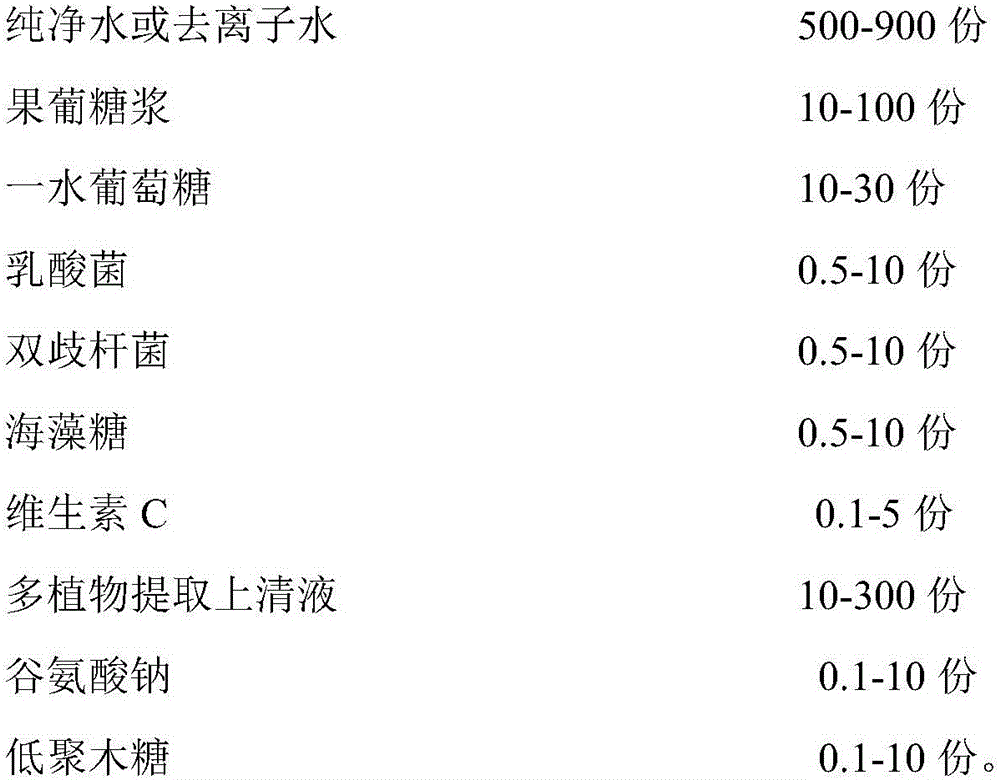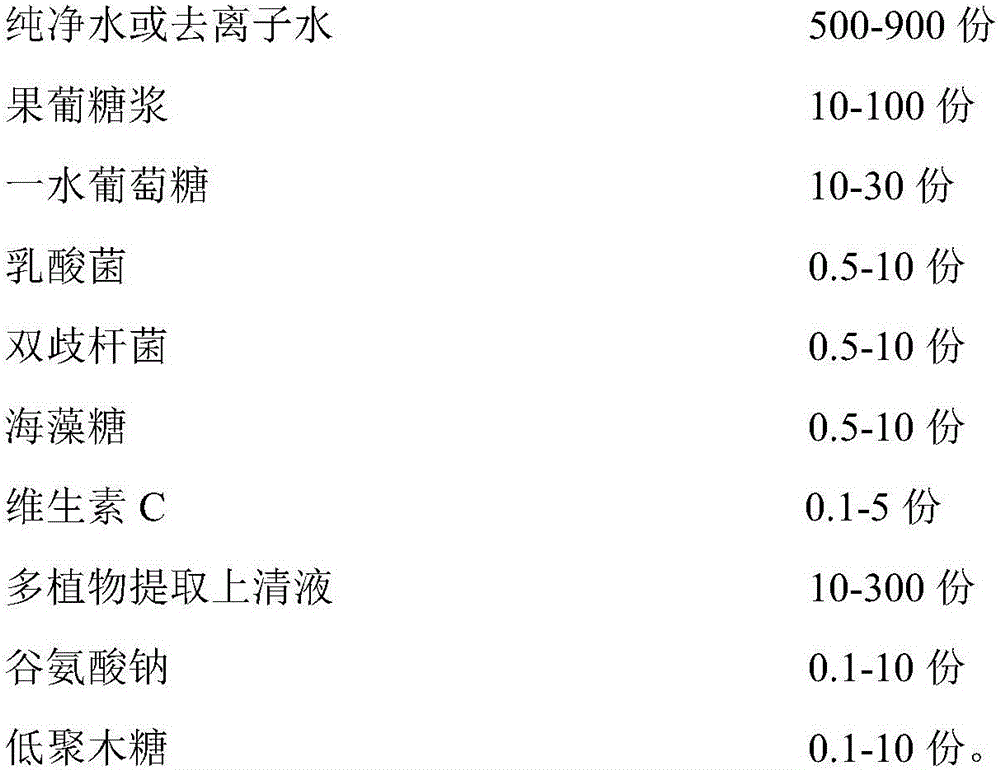Microecological preparation for removing indoor peculiar smell and decomposing formaldehyde and preparation method of microecological preparation
A technology of micro-ecological preparations and formaldehyde, applied in the field of indoor air purification, can solve the problems of formaldehyde rebound, catalyst micropore blockage, and ineffective removal of harmful gases in the room air, etc., and achieve long-lasting effects
- Summary
- Abstract
- Description
- Claims
- Application Information
AI Technical Summary
Problems solved by technology
Method used
Image
Examples
Embodiment 1
[0034] A preparation method of the micro-ecological preparation for eliminating indoor peculiar smell and decomposing formaldehyde, comprising the steps of:
[0035] 1) Ingredients 1: Pure water or deionized water is heated to 45°C, 20 parts by mass of glucose monohydrate (the same below), and 50 parts of fructose syrup are dissolved in it, and homogenized to 200 parts by constant volume;
[0036] 2) Ingredients 2: crush lemon, seaweed, pineapple, green radish, tomato, etc., boil, filter with six layers of gauze, and get 200 parts of supernatant;
[0037] 3) Sterilization: after mixing the above two ingredients, sterilize at 121°C for 15 minutes;
[0038] 4) Inoculation: the selected strains are dissolved in a solution containing 5 parts of trehalose according to the ratio of 6 parts of lactic acid bacteria to 3 parts of bifidobacteria for inoculation;
[0039] 5) Fermentation: the temperature is 37°C, the time is 100 hours, and the fermentation can be terminated when the pH ...
PUM
 Login to View More
Login to View More Abstract
Description
Claims
Application Information
 Login to View More
Login to View More - R&D
- Intellectual Property
- Life Sciences
- Materials
- Tech Scout
- Unparalleled Data Quality
- Higher Quality Content
- 60% Fewer Hallucinations
Browse by: Latest US Patents, China's latest patents, Technical Efficacy Thesaurus, Application Domain, Technology Topic, Popular Technical Reports.
© 2025 PatSnap. All rights reserved.Legal|Privacy policy|Modern Slavery Act Transparency Statement|Sitemap|About US| Contact US: help@patsnap.com


